Art Fairs
1:54 Contemporary African Art Fair Is Full of Good Art and Tough Questions
A welcome, if too-partial, attempt to spotlight artists from Africa.
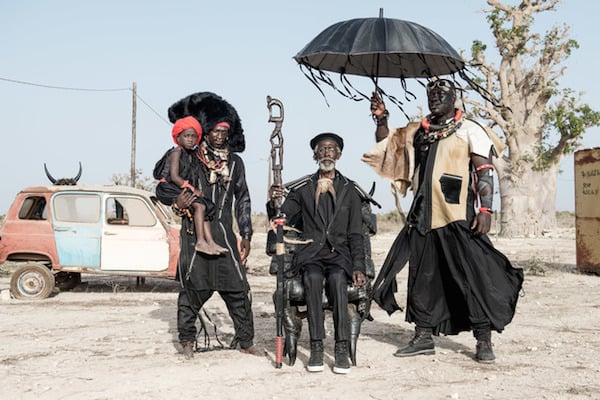
A welcome, if too-partial, attempt to spotlight artists from Africa.

Ben Davis


1:54 African Art Fair at Pioneer Works
Photo: Ben Davis
1:54 Contemporary African Art Fair is one of the highlights of this frantic New York fair week. It’s pleasant and manageable, featuring just a smart handful of 16 international galleries showcasing works of art that can somehow fit into the category of “African art.” It nestles comfortably into Pioneer Works, the airy kunsthalle that is the symbol of the Williamsburg-ization of Red Hook. That doesn’t mean that 1:54 can escape the dilemmas of such a catch-all project, which smacks of the infamous line, (falsely) attributed to Sarah Palin: “Africa is a country.”
But don’t let that turn you away. There are now “Asian” art fairs, and “Latin-American” art fairs, and “Middle-Eastern” art fairs, each of these a messy proposition in its own way, but each, through its untenable generalization, forcing open the space for some interesting voices. That Africa has joined the fray means something significant, even if it doesn’t escape all the obvious difficulties.
The fair’s title translates to mean “One continent: 54 countries.” On one level, however—the level where you ask which Africa is being represented—it is more like 1:4. That is, in terms of economic clout, just four African countries send galleries; a full five of these hail from a single country, South Africa; Nigeria, Cote d’Ivoire, and Morocco account for one each. The remainder consists of Europe or US galleries with interests in different types of contemporary art related to Africa or the African diaspora.
“Obviously, we are just touching the tip of the iceberg with what we are representing,” the fair’s founding director Touria El Glaoui told me. “It is going to be evolving in terms of what you see at 1:54. All of these art scenes are developing right now.”
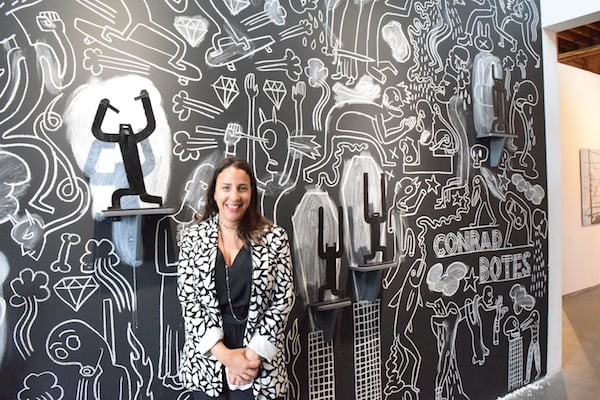
1:54 director Touria El Glaoui with an installation by Conrad Botes at Bennett Contemporary
Photo: Ben Davis
At the Brussels-based NOMAD gallery, several paintings by the US-based, Nassau-born Lavar Munroe (b. 1982) are standouts. His colorful, uneasy clouds of forms have the miasmic character of a slightly evil memory, laid on pieces of rough canvas that are cut apart and then laced back together in various ways.

Lavar Munroe at NOMAD Gallery
Photo: Ben Davis
Speaking with me at the NOMAD stand, Munroe said his work grows out of his research into the “human zoo,” that is, the tradition of putting the non-European “other” on view for mainly European-American audiences, alongside animals. He drew a parallel between this tradition and the idea of an fair dedicated to “African art” itself, wondering aloud if his implicit criticism of the audience’s hunger for spectacles of otherness might put them off his work.
I think the paintings are rather too lovely and fantastical to do that—I was told by El Glaoui that a Munroe canvas was, in fact, the first thing to sell from 1:54 (the fact that he is featured in the current Venice Biennale probably helps). Still, those nagging power issues remain in the air, like the uneasy atmosphere flowing through Munroe’s paintings. “How many Africans are showing Africans here?” he asked wryly of the fair. “One?”
Around the corner, the work of Beninese-Belgian photographer Fabrice Monteiro (b. 1972) at Seattle-based Mariane Ibrahim Gallery stages, among other things, a scene of what dealer Ibrahim described as an “African-style Mad Max.” Three black-clad men and a child stare out confrontationally from the apocalyptic desert of an unknown, but stylish, future.

Work from Fabrice Monteiro’s “The Missing Link” series at Mariane Ibrahim Gallery
At the center of Monteiro’s image, a rangy, bearded man seated with an elaborate wooden scepter is Dakar-based artist Issa Samb (aka Joe Ouakam), a serious art figure in his own right. Here, his person seems to serve as a metaphor for some kind of new, rebel art scene claiming its throne. (Hip-hop impresario Swizz Beatz is a fan.)
Over at Marrakesh’s VOICE Gallery, it is hard to keep track of the disorienting web of identity issues in the work of Eric van Hove (b. 1975). A bio explains that Van Hove is “born in Algeria but grew up in Cameroon and lives between Japan, Belgium and Morocco;” he has described himself more simply as “nomadic.”
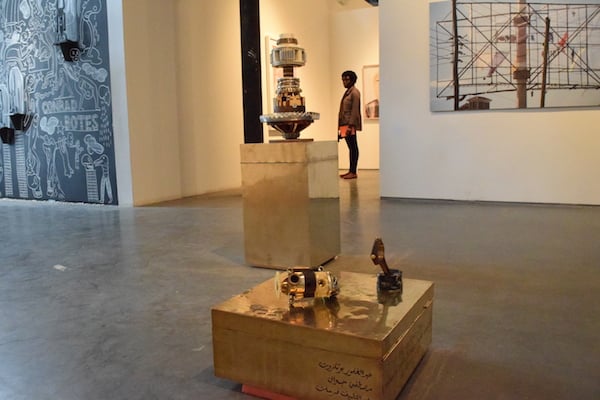
Eric Van Hove, Caterpillar 428B Drivetrain Differencial and Bevel gear groups (2014) at VOICE gallery
Photo: Ben Davis
The sculptures on view look like deadpan recreations of machine parts in precious materials; they are an extension of a project he did, an homage to Moroccan businessman Abdeslam Laraki’s scheme to manufacture an all-local sportscar, an initiative that succeeded but for one detail: He had to import the engine from Germany. For his project, Van Howe hired 53 Moroccan craftsmen to create the parts of a V12 Mercedes-Benz engine in local materials, thereby ironically realizing the truly “Moroccan” motor of Laraki’s dreams.
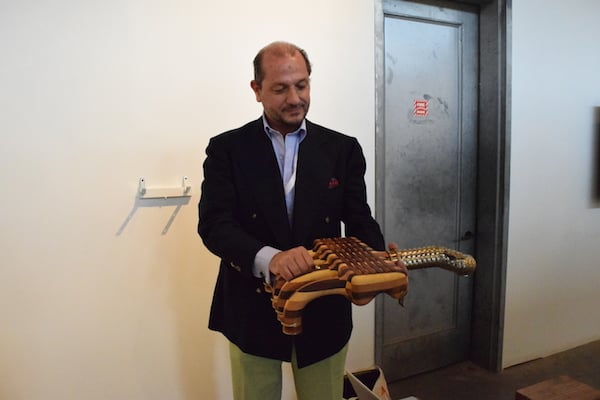
Dealer Rocco Orlachhio showing off Eric Van Hove’s Untitled (Citroën Berlingo intake manifold) (2014)
Photo: Ben Davis
The resulting artisanal machine parts are a wonder to look at and handle, observing how the various hand-made components, forged of ceramic, terracotta, and some other decidedly non-industrial materials, snap together. The simultaneously conceptual and hand-made character of the project maps neatly (too-neatly?) onto the interplay between locally rooted and some more “nomadic” identity in a globalizing age.
Issues of power and representation have, of course, been around for a long time when it comes to the European and American art world’s relation to artists from Africa. Only a few steps into Pioneer Works, there’s a reminder of this history at Magnin-A gallery, of Paris, in the form of two large and dreamy canvasses by the venerable Congolese artist Chéri Samba (b. 1956).
Samba came to international prominence a quarter century ago as part of the Pompidou’s landmark 1989 exhibition “Magiciens de la Terre,” curator Jean-Hubert Martin’s attempt to decenter the contemporary-art canon by presenting a survey of non-Western artists. “Magiciens” was a polemic in exhibition form, a reply to MoMA’s “Primitivism” show, which touched off lacerating debate about the exoticization and misrepresentation of African art in particular.
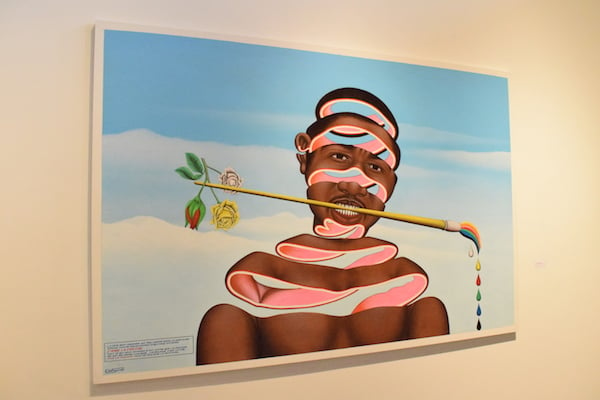
Chéri Samba, J’aime la couleur (2014) at Magnin-A
Photo: Ben Davis
At Magnin-A, one Samba canvas features a surreal self-portrait, a new articulation of one of his most well-known images, the form of his head and body seeming to be woven from an unraveling pink ribbon hovering in space, a paint brush gripped in his mouth dripping colors. It is as if the artist is making a statement about making or un-making himself through art.
An inset French text panel in the corner reads in part, “Our heads must turn, in the direction of a spiral, in order to recognize those around us.” That at last seems as good a piece of advice as any on how to take this whole show, as an invitation to look around, even if you have to unravel some of your ideas about what you are looking at to do so.
1:54 Contemporary African Art Fair runs through May 17, 2015 at Pioneer Works.